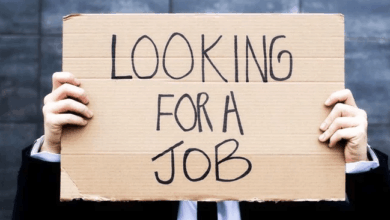
Where Organizations Get “Diversity and Inclusion” Wrong
There can be no argument that organizations need to be more inclusive and support greater diversity. This goes for private enterprises and municipal government institutions alike. Without real commitment in this area, organizations can’t claim to truly represent, understand, or cater to the community.
Over the last several years, diversity and inclusion (D&I) have come to the fore as priorities for organizations. This has largely been a result of demand from a more progressive public. However, there are still significant numbers of business and social leaders who attempt to implement these values to a certain extent but are consistently getting them wrong.
We’re going to look at some of the main areas organizations fall down on genuine diversity and inclusion.
Narrowing Their Definitions
A common issue in implementing inclusive protocols is organizations don’t always have a clear definition of what diversity is. Too often there is a very simplistic approach based purely on racial diversity that essentially amounts to tokenism rather than meaningful change. It is vital to recognize there is a serious racial disparity in workforces. But to be truly diverse, organizations need to broaden their definitions.
Alongside race considerations there needs to be a focus on greater representation in gender and sexuality. There is a particularly pervasive imbalance along gender lines, with women particularly absent in leadership roles. It’s also vital to understand gender diversity extends to transgender and non-binary members of the community.
Those who experience accessibility challenges are also often overlooked within the diversity and inclusion definitions. Even when organizations consider those with physical disabilities, there is a tendency to miss the presence of those whose challenges are less visible. Organizations must remember that those with neurodivergent traits, mental health difficulties, and learning disabilities can be valuable contributors when their needs are considered and supported.
Another point of consideration is socioeconomic status. Some organizations exhibit xenophobia at a cultural level preventing them from engaging with refugees. Though the most common issue here is overlooking candidates who may not have been able to attend universities or complete traditional education. With some training, these people could be valuable contributors. As such serious work needs to be done to expand ideas of diversity and make adjustments to programs accordingly.
Missing Everyday Issues
A key point at which organizations make D&I missteps is in treating these principles as applicable only to certain milestones. These are elements business leaders assume are servicing D&I protocols, like recruitment outreach or implementing minimum accessibility standards. However, true D&I has to be present in all aspects of organizational operations — leaders need to address the everyday issues as well as the overarching challenges.
It is not enough for a company to just hire people of traditionally marginalized backgrounds and claim they’re committed to D&I. There needs to be a push to make certain minorities are supported and nurtured throughout their employment experiences. This means encouraging a culture set on removing hurdles and making a safe place for workers to raise problems should they occur.
Prevention of potential everyday issues is far preferable, though. Providing D&I-related training to all employees can be a tool for this. Microaggressions that cause stress and lasting damage to members of marginalized groups are one of the most commonly overlooked examples of failed inclusivity. This is often because aggressors aren’t always fully conscious that their behavior and even the environment are hostile to the target. It’s vital to give full education on how issues such as microaggressions present and provide the knowledge to make adjustments to their attitudes and actions.
Lacking Cultural Education
Diversity and inclusion must be underpinned by genuine respect by all employees for their colleagues. Unfortunately, there is a pervasive cultural ignorance preventing this. Ideas about marginalized groups are too often based on stereotypes and misinformation. As such, to ensure true understanding and consideration, businesses need to commit to cultural education in areas they may be lacking.
This isn’t just about avoiding overt prejudice or the aforementioned microaggressions. Though these are important to tackle. It’s also about the nuances of cultures that employees may not have been exposed to or have any real understanding of. While some missteps might be considered faux pas, other elements like cultural appropriation in fashion choices or practices can be offensive or harmful. Teaching workers to recognize the lines between appreciation and appropriation is a step toward maintaining harmony and respect.
With the importance of these nuances in mind, organizations should confirm training is always provided by those with relevant expertise. They must use programs led and designed by the groups they are intended to represent. This helps to ensure the accuracy of the information and also contributes to the organization’s commitment to being inclusive in their relationships with contributors.
Overlooking Inclusive Input
Part of the issue surrounding organizations’ relationship with D&I is their tendency to dictate terms. They’ve performed some research, perhaps worked with a consultant, and made decisions on how to implement policies and protocols. This leaves little room for input from the people these protocols are supposed to empower.
Just as in creating a positive and safe environment, open discussion is a path to true inclusion. This could take the form of round tables employees of all levels and backgrounds are encouraged to attend. This should be geared toward gaining insights and also involve representative staff in establishing solutions to areas of concern.
However, it’s important to remember it’s not the responsibility of marginalized employees to educate leaders and colleagues. Indeed, this can be emotionally exhausting. Leaders should take note of the ideas and problems raised and implement suggestions when provided. But if organizations want their employees involved further than this, it needs to be in consultation with the workers and compensation should be provided.
Conclusion
Diversity and inclusivity may seem simple enough, but many organizations still get this wrong. Often this comes down to narrow definitions and overlooking microaggressions. Part of the solution is to improve cultural education among all staff and make certain improvements are driven by insights of those they impact the most. There’s still a long way to go to true inclusivity, but these can be steps in the right direction.
Image Source: Pexels






